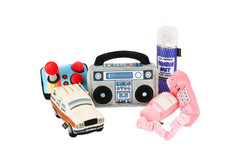The safety of your dog as well as people and pets your dog encounters is 100 percent your responsibility as an owner. Even if your family dog is more for your children than you, the responsibility of your dog rests solely on your shoulders. Misinformed cultural perceptions often have people assume that a dog like a Pit Bull is likely to bite, while a Golden Retriever or Cocker Spaniel would never bite. The fact is that any dog breed may bite, depending on the circumstances. Here are some tips to keep your dog safe around people, and for people to be safe around your dog.
Be Careful with the People Your Dog Encounters
Do not be afraid to insist on reasonable and rational behavior around your dog. Dog breeds vary in intelligence, but none have the ability to highly differentiate behaviors from situation to situation. Your dog may be well-behaved and very calm at home but nervous when out where public contact can occur. Be aware of people approaching, especially children as they often will run up to a dog and try to pet it. Dogs bite out of fear and a desire to protect. Some actions people take in public can appear threatening to the calmest dog. Fast movements, loud voices, uniforms and more can be triggers. Insist that people ask permission before approaching or petting your dog. Likewise, you should also keep your dog from approaching others in public.
Be Especially on Guard Around Children
Some young children cannot appreciate that dogs are not inherently safe. Plus, very young children cannot process that they may be causing pain to the dog. They may innocently pull a tail or reach for an object or food that a dog is interested in, not understanding the natural territorial instincts of dogs. Your dog that listens to every adult may see children more as peers or subordinates than superiors. This can lead to natural behaviors of biting that dogs participate in when establishing pack hierarchy. A slight nip to correct a child pestering your dog can lead to a world of legal trouble. If a parent will not control their child around your dog, you must take the initiative. The best method of control is to immediately remove your dog from the situation. However, if your dog ever does end up biting anyone, don’t hesitate to contact a lawyer, such as one from the Law Office of Daniel E Goodman, LLC, who specializes in this type of event.
Formally Train Your Dog
The best way to have any assurance your dog will not bite is to participate in formal obedience training. This requires regular work and refresher training. Your dog should sit, lie down and come to you immediately on command in even the most distracting situations. This requires dedicated training as your dog that is obedient in your living room may not listen at all at the local dog park. Formal training should be of the Positive Reinforcement type. Training that uses physical punishment can fill your dog with anxiety and fear that leads to a bite.
Supervised Socialization
Ideally, socialization begins when your dog is a puppy. However, adult dogs can learn to be comfortable and not fearful in situations ranging from walking down a busy urban street to attending a birthday party of exuberant toddlers. It takes experience in controlled situations for your dog to learn what is and what is not appropriate. Your dog should learn to respect human beings and other pets as 100 percent off-limits for any sort of aggression. Dogs want to please people they perceive as pack leaders, and you are, or should be, your dog's alpha leader. Short controlled exposure to new situations will help your dog become accustomed to new things and not be afraid.
Every person who has a dog should never just assume that their pet is always safe around people or that those people are safe to be around it. That is why it is important to follow the above advice and take control.





